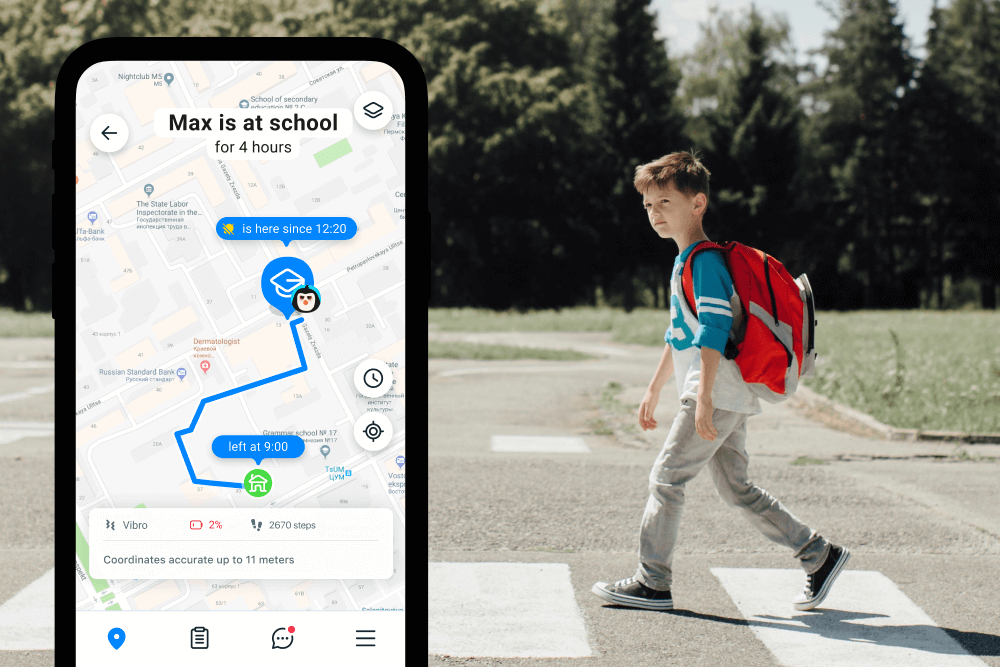A Closer Look at Teen Texting while Driving with Real Accident Stories
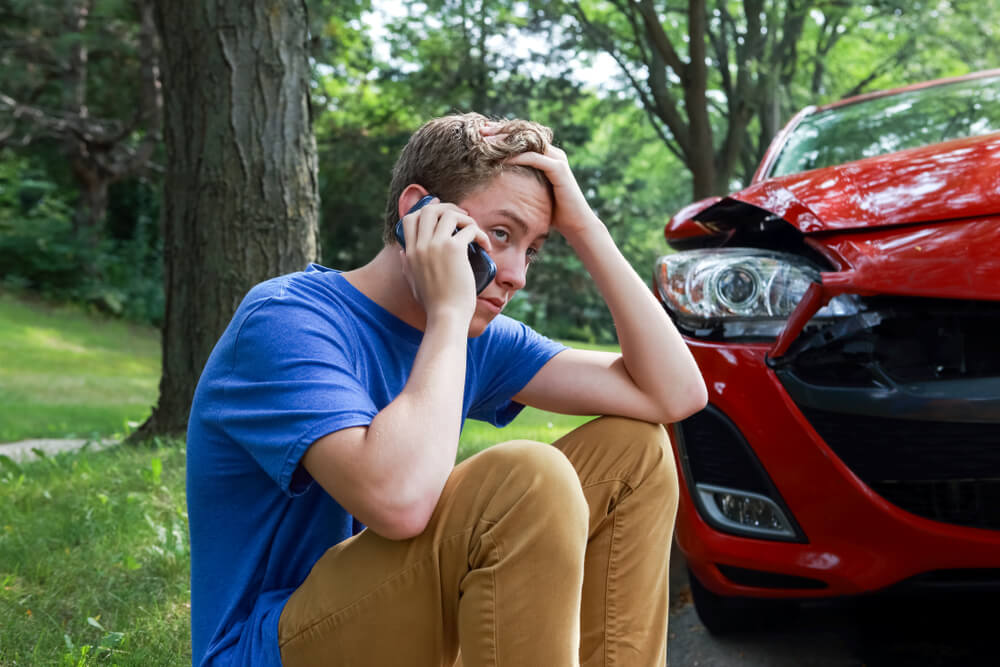
In the five seconds it takes to check a text while driving could result in a life-changing consequence. Teens and new drivers are the most common drivers to check their phones while on the road. To help make you more aware of the dangers of distracted driving, we’re collecting texting and driving accident stories to share with your teens.
Contents:
- Does Texting and Driving Create a Crash Risk? Statistics and Numbers
- Real Life Texting and Driving Accident Stories
- Who is Most at Risk for Texting and Driving?
- Protect Your Teen with the Findmykids App
- FAQs
Does Texting and Driving Create a Crash Risk? Statistics and Numbers
Yes, texting and driving creates a major risk of crashing while on the road. When you check your phone for just five seconds, you become a danger to yourself and other drivers around you.
Texting while driving is particularly prevalent among teenagers. The Centers for Disease Control and Prevention (CDC) reports that 39% of high school students who drove in the past 30 days admitted to sending texts or emails while driving.
Moreover, the AAA Foundation for Traffic Safety found that distraction was a factor in nearly 6 out of 10 teen wrecks, with texting being one of the most common distractions.
Despite these alarming statistics, a survey by the American Automobile Association found that while 94% of teens acknowledge the danger of texting while driving, 43% admitted to doing it anyway.
after checking a text, it can take 27 seconds to reorient your vision and attention to the road. During this time, the driver’s reaction time is decreased by 35%, creating a dangerous environment for both those in the car and drivers around the distracted driver.
The National Highway Traffic and Safety Administration (NHTSA) reported 3,142 people were killed in 2020 due to distracted driving accidents. Unfortunately, this is a 1% increase from the year before.
according to the Federal Communications Commission, texting while driving is six times more likely to cause an accident than driving drunk. This statistic underscores the severity of the risk associated with texting and driving, particularly among teenagers.
Real Life Texting and Driving Accident Stories
Reading the statistics above, it’s easy to see just the number and not truly consider that actual people and drivers were involved in these dangerous car accidents.
The issue of distracted driving is a serious one that parents should speak to their children about.
Also, if you’re a parent who checks their phone while driving, it’s important to stop this reckless driving behavior not only to become an example of a good driver for your teens but to protect yourself and your children while in the car.
Below are some real texting and driving accident stories and articles to remind you that this epidemic can happen to anyone.
Two-Time Distracted Driver
Amanda Clark was a teenager who wrote about her first experience with a texting and driving accident. Her Chevy Trailblazer rolled three times as she was checking her phone. While the car had landed on its roof, she was able to walk away from the crash.
Fast forward one year, Amanda did not seem to learn her lesson about cell phone use while driving. She was texting on her phone when she experienced a violent and fatal tragedy. Found unresponsive by paramedics, Amanda passed away the next day.
A Phone Call That Changed Everything
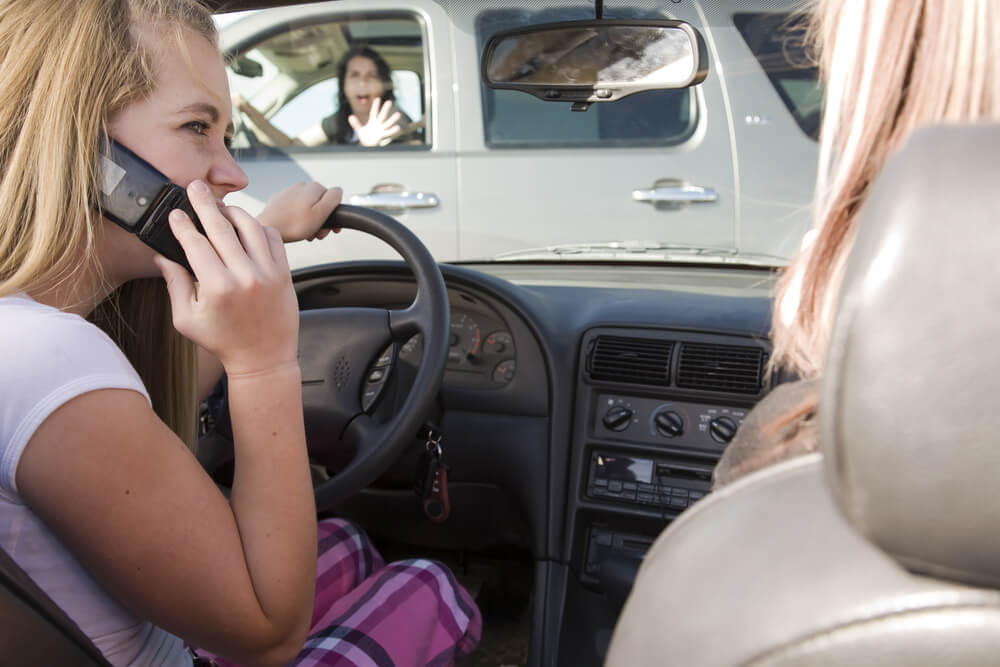
Alan Poulson Photography/Shutterstock.com
In 2005, driver Douglas Kidd picked up his cell phone to make a call about his upcoming golf event. As he was distracted by his phone conversation, a vehicle traveling 50 miles per hour crashed into the side of his car as he was crossing an intersection.
While Douglas miraculously escaped death and survived the accident, he spent a month in a trauma unit due to a coma and nearly 18 months learning how to walk again.
A Fatal Text
In 2018, high school senior Camryn Lunsford was driving home from work. She was just 26 days from turning 18 and graduating in three months.
As she texted a friend, she drove right under an 18-wheeler in front of her, resulting in a fatal accident.
It’s unbelievable that it can take just a couple of seconds to ruin your life. No matter how important you think that phone call or text message is, it can wait until you are parked or out of the car.
Who is Most at Risk for Texting and Driving?
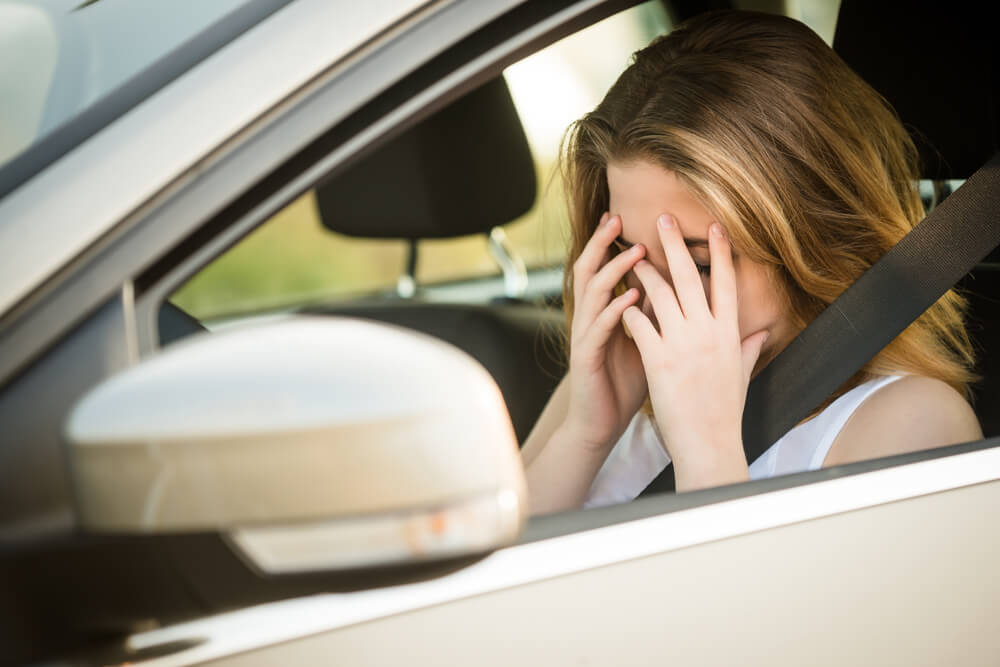
Martin Novak/Shutterstock.com
With understanding and parental guidance, we can help reduce these statistics. Let’s delve deeper into the age group most susceptible to this risky behavior—teens between the ages of 15 and 20.
They indeed represent the demographic most at risk for texting and driving. As they make their first steps into the world of independence, the allure of staying connected with their peers often takes precedence over responsibility behind the wheel.
Worryingly, it’s revealed that 9% of fatal crashes involve a distracted driver within this very age group, many of which are single-car crashes, but many more of which involve other vehicles and victims. It’s an alarming fact that sheds light on the gravity of this issue.
Beyond texting, with increasing responsibility and growing horizons, checking emails while driving becomes more prevalent among older teens, adding another layer of danger.
It’s important for adults and parents to communicate these risks and methods for driving safer in a way that doesn’t incite fear, but fosters understanding and instills responsible behavior. For these young drivers, understanding the importance of focusing on the road can only come from the information we share and the examples we set.
How to Talk to Your Teen About the Risks of Texting and Driving
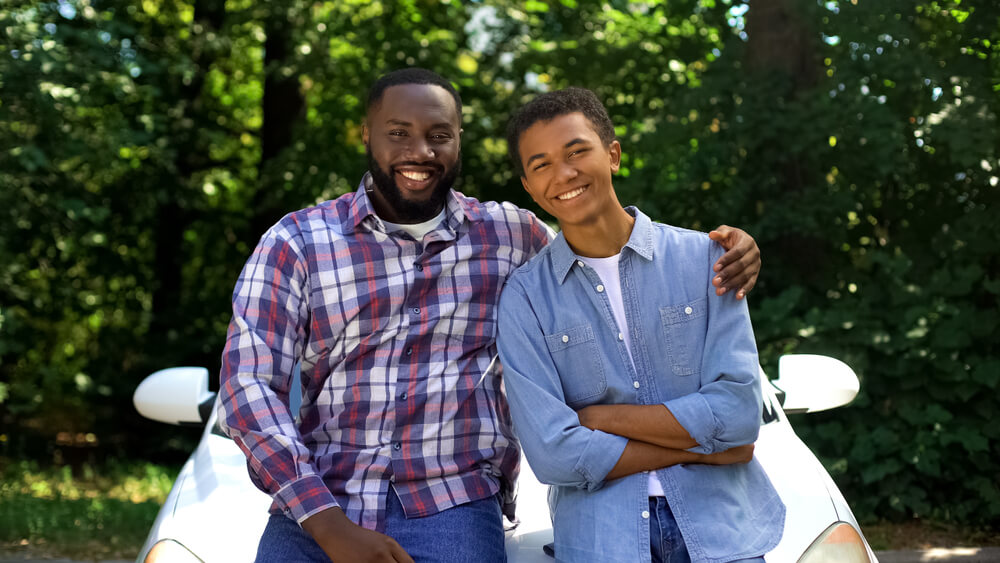
Motortion Films/Shutterstock.com
Initiating this discussion with your teenager can feel daunting. You might consider starting by sharing a texting and driving accident story you stumbled upon, emphasizing the real-life consequences.
Retain your calm and friendly tone throughout. Encourage open dialogue, letting your teen voice their thoughts and concerns, too. Employ tangible examples of texting distractions in a safer setting, maybe at home, to drive the point home.
Recognition of the struggles that teens face in this digital age is crucial. Most of them may feel pressured to respond to messages while driving due to FOMO (Fear Of Missing Out).
Help your teen develop strategies to resist the urge to text while driving.
Suggest switching their phones to ‘Do Not Disturb While Driving’ mode or a similar feature. You could encourage your teen to let their friends know they won’t respond to texts while driving. This can not only protect your teen but also might influence their friends to do the same.
Fostering a bond of trust and understanding with your teen will go a long way. Let your teenager know that they can always call you for a ride if they feel unsafe due to a texting driver.
It’s important to remind your teen that they’re not invincible. Choosing not to text and drive can save their life and the lives of others.
The role of parents in shaping safe driving attitudes in their teens cannot be overstated. Lead by example, not using phones while driving yourself.
Protect Your Teen with the Findmykids App
Keeping tabs on your teens has never been easier, thanks to the innovative features of the Findmykids app.
With the knowledge of your child’s location at your fingertips, this tool offers a sense of peace without compromising your teen’s independence. Especially useful for worrying when they’re out driving, the app allows you to monitor any unsafe practices, like speeding behaviors or route deviations.
The Driver Protector feature in the app is currently in development, with ongoing intensive efforts to enhance its functionality. The preliminary version aims to address the alarming issue of texting and driving accidents.
As parents, having such a practical tool to safeguard your teen driver can be a game-changer, making the Findmykids app a worthwhile investment in their well-being.
Don’t Let Your Teen Become Another Texting and Driving Accident Story
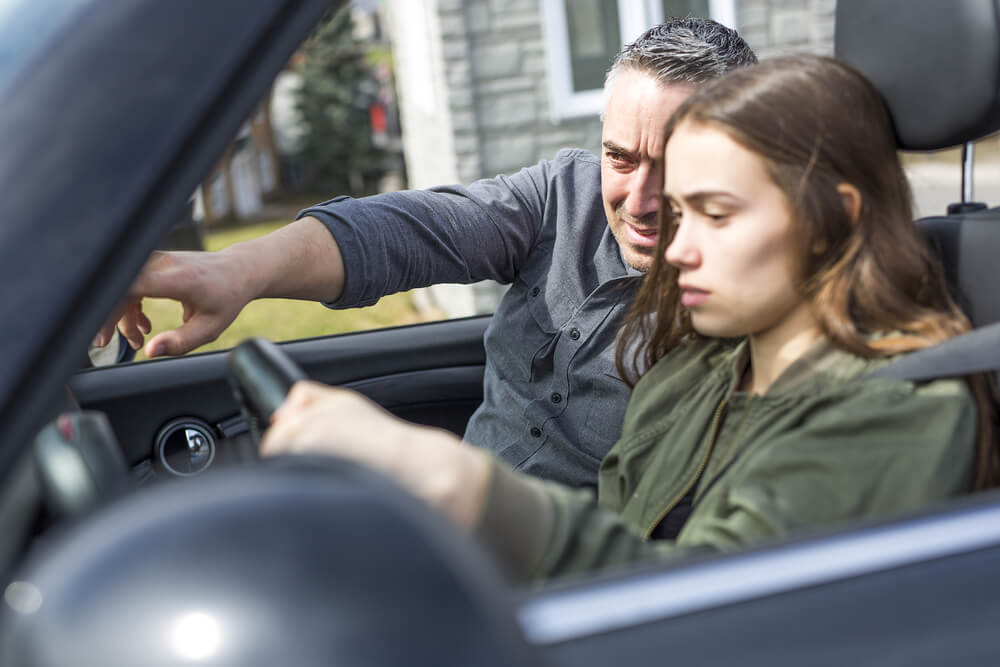
Lopolo/Shutterstock.com
It can be a scary time handing over the keys to your newly licensed teen driver, especially after reading about these texting and driving accident statistics and stories.
Knowledge is power, though.
When you are aware of the dangers and frequency of distracted driving car accidents, you can inform your teen and provide them with the tools they need to drive safely and without distractions.
If you found this article impactful and informative, especially with real texting and driving accident stories, share it with other parents with teenagers to help them reduce accidents on the road, too.
Read also: Top 12 Car Trackers for Teenagers.
FAQs
What is the #1 killer in driving?
The #1 killer in driving is distracted driving, with texting being the most dangerous form. When drivers look at their phones, they miss critical visual cues like red light changes and stop signs. This deadly combination causes thousands of automobile crash fatalities each year. Distracted drivers often fail to check their rear-view mirrors properly and may not notice hazards approaching from the driver’s side. Unlike other driving risks, texting creates a perfect storm of visual, manual, and cognitive distraction that makes it the deadliest behavior behind the wheel.
What is the main consequence of texting while driving?
The main consequence of texting while driving is automobile crash incidents that can result in traumatic brain injury or death. When you text, you’re essentially driving blind for several seconds, making it impossible to react to red light changes, stop signs, or other vehicles. These crashes often cause severe head injuries that require treatment in specialized facilities, including mental hospitals for cognitive rehabilitation. Many victims suffer permanent disabilities from traumatic brain injury that completely change their lives.
What is an example of a texting and driving accident?
17-year-old Camryn Lunsford was sending a text while driving home from work when she drove straight under an 18-wheeler and died in the crash.
What happens if you cause an accident while texting?
If you cause an accident while texting and driving, you will be held liable for the crash and any resulting injuries or fatalities. Remember, in most states, it is illegal to text while driving.
Does texting make a crash 23 times more likely?
Yes, when you text and drive, you are 23 times more likely to be involved in a car accident.
Can cops prove you were texting and driving?
Yes, police can prove you were texting and driving through multiple methods. They can obtain your phone records showing exact timestamps of texts sent or received. Many in-car systems now log phone connectivity and usage data that can be accessed during investigations. Officers are also trained to spot telltale signs like erratic movement between lanes, delayed reactions to red light changes, and failure to stop properly at stop signs. Dashboard cameras from other vehicles often capture drivers looking down at their phones.
What are three facts on texting and driving accidents?
- Around 3,000 people die each year in accidents caused by distracted drivers.
- Teens between the ages of 15 and 20 are responsible for 9% of fatal distracted accidents.
- 1 in 4 accidents is caused by a distracted driver.
What are 5 facts about texting and driving?
- Texting takes your eyes off the road for an average of 5 seconds, during which you could miss a red light change or fail to see stop signs ahead.
- Automobile crash victims who were texting often suffer traumatic brain injury because they don’t brace for impact, making head injuries more severe and requiring extended treatment in specialized mental hospitals.
- Texting drivers frequently miss critical safety checks like using their rear-view mirror and monitoring the driver’s side blind spot, leading to dangerous lane changes and merging accidents.
- Despite safety features in modern in-car systems, drivers still choose to use handheld devices, creating unnecessary risks that built-in technology could eliminate.
- The urge to immediately respond to social media notifications while driving has become a major factor in texting-related crashes, especially among younger drivers who feel constant pressure to stay connected online.
The picture on the front page: Suzanne Tucker/Shutterstock.com
Проверьте электронный ящик














